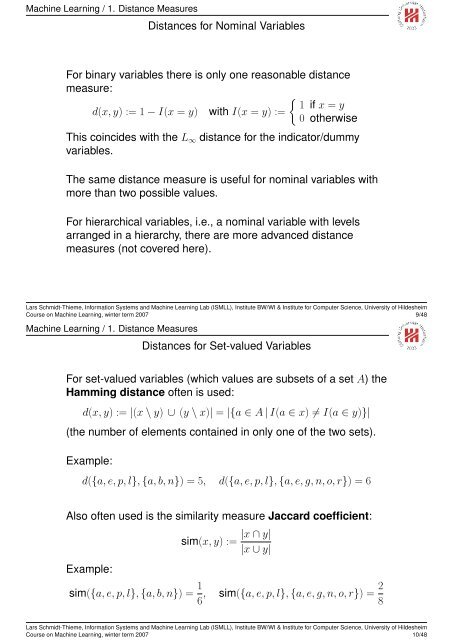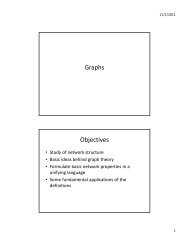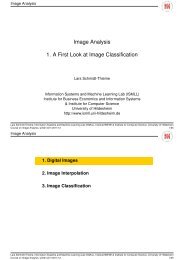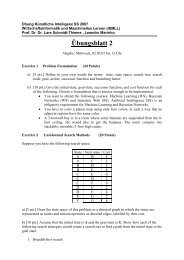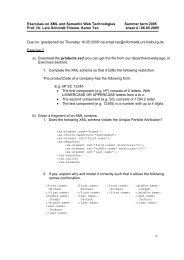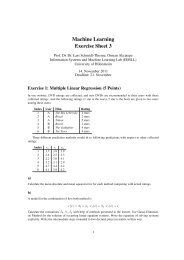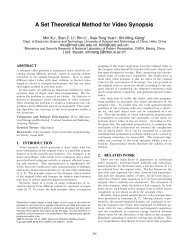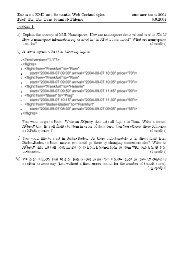Machine Learning 3. Nearest Neighbor and Kernel Methods - ISMLL
Machine Learning 3. Nearest Neighbor and Kernel Methods - ISMLL
Machine Learning 3. Nearest Neighbor and Kernel Methods - ISMLL
You also want an ePaper? Increase the reach of your titles
YUMPU automatically turns print PDFs into web optimized ePapers that Google loves.
<strong>Machine</strong> <strong>Learning</strong> / 1. Distance Measures<br />
Distances for Nominal Variables<br />
For binary variables there is only one reasonable distance<br />
measure:<br />
{ 1 if x = y<br />
d(x, y) := 1 − I(x = y) with I(x = y) :=<br />
0 otherwise<br />
This coincides with the L ∞ distance for the indicator/dummy<br />
variables.<br />
The same distance measure is useful for nominal variables with<br />
more than two possible values.<br />
For hierarchical variables, i.e., a nominal variable with levels<br />
arranged in a hierarchy, there are more advanced distance<br />
measures (not covered here).<br />
Lars Schmidt-Thieme, Information Systems <strong>and</strong> <strong>Machine</strong> <strong>Learning</strong> Lab (<strong>ISMLL</strong>), Institute BW/WI & Institute for Computer Science, University of Hildesheim<br />
Course on <strong>Machine</strong> <strong>Learning</strong>, winter term 2007 9/48<br />
<strong>Machine</strong> <strong>Learning</strong> / 1. Distance Measures<br />
Distances for Set-valued Variables<br />
For set-valued variables (which values are subsets of a set A) the<br />
Hamming distance often is used:<br />
d(x, y) := |(x \ y) ∪ (y \ x)| = |{a ∈ A | I(a ∈ x) ≠ I(a ∈ y)}|<br />
(the number of elements contained in only one of the two sets).<br />
Example:<br />
d({a, e, p, l}, {a, b, n}) = 5, d({a, e, p, l}, {a, e, g, n, o, r}) = 6<br />
Also often used is the similarity measure Jaccard coefficient:<br />
Example:<br />
sim(x, y) :=<br />
|x ∩ y|<br />
|x ∪ y|<br />
sim({a, e, p, l}, {a, b, n}) = 1 6 , sim({a, e, p, l}, {a, e, g, n, o, r}) = 2 8<br />
Lars Schmidt-Thieme, Information Systems <strong>and</strong> <strong>Machine</strong> <strong>Learning</strong> Lab (<strong>ISMLL</strong>), Institute BW/WI & Institute for Computer Science, University of Hildesheim<br />
Course on <strong>Machine</strong> <strong>Learning</strong>, winter term 2007 10/48


